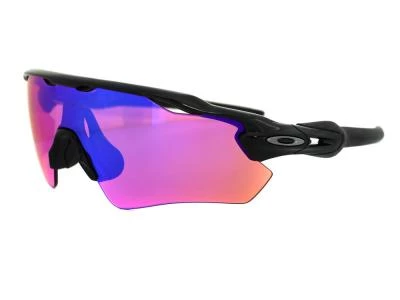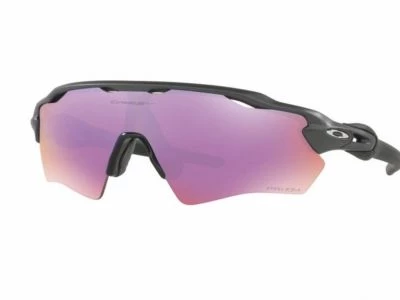Sports glasses are more attractive than ever, and not just with sporty types, but there are several things to consider before choosing a pair of sports sunglasses.
The first thing to think about is where you are going to wear your new shades. Sports enthusiasts can operate in very different conditions.
The golfer, for example, will expect to experience lots of green, wide open spaces while the angler can be staring into deep, dark water for prolonged periods.
The cyclist will hope to pick out details of road surfaces and will worry about wind, dirt and dust getting into the eye.
The long-distance runner, however, will care more about sweat on the face and look for sports sunglasses that will help pick out obstacles on the trail surface.
If you plan to wear your glasses in shady woods, then lenses designed to work best in a dark environment will be better than one that picks out surface details on the wide, brightly lit open road and vice versa for the trail bike rider.
Many lens coatings are finely calibrated to improve clarity and contrast in specific sports environments, and you will need to match your glasses to the particular activity if you want to excel.
Materials matter in sport glasses
The second consideration should be the lens material. The choice here is mostly glass or polycarbonate lenses.
Glass tends to be marginally clearer than polycarbonate and less prone to scratching whereas the latter is likely to have more impact resistance and be less like lo shatter if you take a tumble.
Weight is another consideration and the lighter the sunglasses, the better in sports where split seconds can count, although the difference these days is pretty marginal.
Advances in technology have brought new features into the arena in recent years. One of the most useful for sport is interchangeable lenses that can be snapped into place in seconds.
This obviates the need to carry more than one pair of spectacles at a time. Different lenses can be snapped quickly into place to suit current weather or other environmental conditions.
Advanced hypoallergenic materials can feel better on the skin, especially in sports where glasses need to be worn for extended periods of time in testing conditions.
Shield lens designs have also improved dramatically in recent years to offer more wraparound protection for the eyes claiming the best coverage while ensuring good air circulation.
Keeping fit and staying in place
Another important factor is fit. Sports glasses tend to get shaken around a lot, especially in more active field sports such as running, jumping and throwing.
Sports enthusiasts won't want to wear glasses are that are tight and uncomfortable, but it is also is vital that they stay in place when the head get shaken around or the face gets sweaty.
There are plenty of sports websites that have tested all types of sports sunglasses. Trials have been made wearing them in a range of environments and weather conditions, including woods, fields, water and on the open road.
So, the key criteria for choosing sports sunglasses are wraparound eye protection, clear vision, robust but lightweight materials and a tight but comfortable fit.
A longer look at lens tints
Other considerations that come into play when buying sports glasses will include the preferred lens colour and tint.
Most brands offer a broad range of lens tint options with their sports models, and your choice should depend on the circumstances and environments where they are most likely to be worn.
The grey or smoke tinted lens is the most popular choice. It is suitable for most light conditions as it reduces light evenly across the whole colour spectrum, but the disadvantage is that it does not provide greater contrast.
Amber and brown tints are other popular choices, offering a higher contrast so that objects appear sharper and distance judgement is improved.
Yellow tints enhance colours in low visibility environments and are preferred in dull or hazy conditions. They also improve contrast and increase depth perceptions so you may see a lot of anglers using yellow-tinted sunglasses.
Reddish tints such as vermillion, orange and rose are a popular choice for sports where you see lots of blue skies. Blue light can bring eye strain and a reddish tint can not only alleviate that but can also increase distance perception and make objects appear sharper.
Other useful lens technologies include photochromic lenses that change colour with the lighting conditions, and many sports eyewear manufacturers are now incorporating this feature in their ranges.
Polaroid lenses have been around for some time and can reduce glare substantially, especially from wide, flat surfaces such as water and sand.
And interchangeable lenses have become increasingly popular. Sports sunglasses makers will offer two or three different single piece lenses that can be switched in and out of the same frame depending on the light and the weather conditions.
As for price, well sports sunglasses come in a wide range of prices, from as low as £60 to an astronomical £300 plus. But you get what you pay for, and the most important thing is to get the right sports glasses for you so that you can improve your sports skills as well as look good in the arena, on the road, on the water or out in the field.



